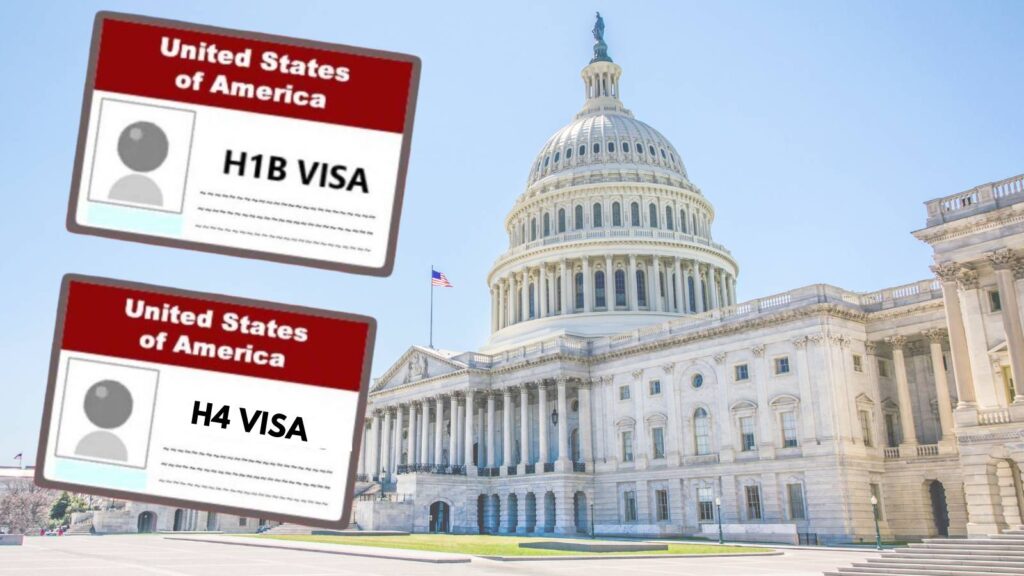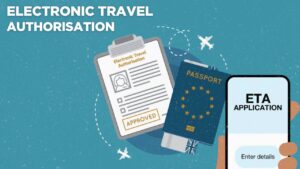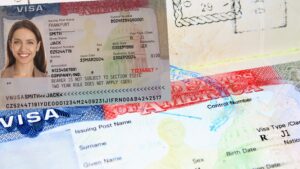U.S. immigration landscape, maintaining lawful status is crucial for foreign nationals. While the H1B visa has long been the gateway for skilled professionals to work in America, life circumstances can lead to changes in priorities. This is where the h1b to h4 change of status process becomes important. It allows H1B visa holders to transition into a dependent status, tied to their spouse’s H1B visa, rather than remaining on an employer-dependent work visa.
H-1B Visa 2025 – Everything You Need to Know Before Applying
Many individuals find themselves considering this change for reasons such as job loss, career breaks, family responsibilities, or strategic immigration planning—especially when a spouse’s green card process is already underway.
By making the switch, they can continue to live legally in the U.S., retain benefits associated with dependent status, and in some cases, still apply for work authorization through the H4 EAD. Understanding the step-by-step process and requirements helps applicants avoid delays, maintain compliance, and make informed decisions about their immigration status.
Understanding the H1B and H4 Visa Categories
The H1B visa is designed for foreign nationals working in specialized occupations, such as technology, engineering, finance, and healthcare. This visa is strictly tied to employment; losing your job or failing to maintain work with your sponsoring employer can lead to loss of legal status. It offers certain benefits like work authorization and the ability to pursue permanent residency, but it also comes with dependency on an employer’s sponsorship.
The H4 visa, on the other hand, is a dependent visa granted to the spouse and unmarried children under 21 of an H1B holder. While the H4 does not automatically provide work authorization, it allows dependents to live in the U.S., attend school, and, under specific conditions, obtain an Employment Authorization Document (EAD). This makes it an important option for those who want to maintain lawful presence without the employment restrictions tied to the H1B.
Understanding these categories is critical before starting the h1b to h4 change of status process because the transition affects work rights, status maintenance, and future immigration plans.
When Should You Consider Switching from H1B to H4?
The decision to transition from H1B to H4 is often driven by necessity rather than preference. A common reason is job loss or employment gaps—since the H1B visa is tied to a sponsoring employer, losing that job immediately puts the worker at risk of falling out of status. In such cases, applying for a change to H4 can help avoid unlawful presence and provide breathing room to plan the next steps.
Another reason is family or personal priorities. Some individuals prefer to focus on family responsibilities, especially during early child-rearing years or while pursuing personal education, without the added pressure of maintaining a full-time job.
Lastly, there is the strategic immigration pathway. If the primary H1B holder is in the process of obtaining a green card and their I-140 petition is approved, their spouse on H4 can apply for an EAD. This enables work opportunities while staying aligned with the family’s overall immigration timeline.
Step-by-Step Process for H1B to H4 Change of Status
Making the h1b to h4 change of status involves careful preparation and adherence to USCIS procedures. Missing steps or submitting incomplete documentation can cause significant delays. Here’s a detailed breakdown of the process:
Step 1 – Confirm Eligibility for H4
You must be the legal spouse or unmarried child (under 21 years of age) of an H1B holder who is currently maintaining lawful status. Without this relationship and valid status, the H4 application will be denied.
Step 2 – Gather Required Documents
Your application will require documents proving both your relationship to the H1B holder and their legal standing in the U.S. This includes approval notices, marriage certificates, passports, pay stubs, and more.
Step 3 – Complete Form I-539
This form, known as the Application to Extend/Change Nonimmigrant Status, is the central part of your application. It can be filed online or via mail. Carefully fill out every section, as missing information can result in USCIS issuing a Request for Evidence (RFE), which prolongs the process.
Step 4 – Pay USCIS Filing Fees
The standard fee for Form I-539 is $370, plus a biometrics fee of $85 per applicant if applicable. Keep receipts for all payments made, as you may need them later for proof of submission.
Step 5 – Submit the Application Package
Your package should include the completed Form I-539, payment receipt, all supporting documents, and any required additional forms. It’s important to keep a full copy of the package for your records.
Step 6 – Attend Biometrics Appointment
USCIS may require biometrics to verify your identity through fingerprints, photographs, and signature collection. Missing this appointment can delay or result in denial of your application.
Step 7 – Wait for USCIS Decision
Processing times vary, typically ranging from three months to over a year, depending on workload and the service center handling your case. During this waiting period, you must maintain your current lawful status until the change is approved.
Required Documents for H1B to H4 Change of Status
The documentation for a h1b to h4 change of status must be comprehensive and error-free. A strong application file often determines the speed and success of approval.
Applicant’s Personal Documents
These include your current H1B approval notice (Form I-797), all relevant pages of your passport, your latest I-94 arrival/departure record, and recent passport-sized photographs following USCIS specifications.
Spouse’s H1B Documents
You will need to include your spouse’s current H1B approval notice, their I-94 record, a copy of their passport, recent pay stubs, an employment verification letter from their employer, and copies of their most recent tax returns and W-2 forms.
Proof of Relationship
Your marriage certificate is mandatory. If it is in a language other than English, provide a certified translation. Optional but beneficial supporting evidence includes wedding photographs or proof of shared finances such as joint bank accounts or leases.
Fees and Processing Time for H1B to H4 Change of Status
The USCIS filing fee for Form I-539 is $370, with an additional $85 biometrics fee in most cases. While these are the direct costs, applicants may also need to consider additional expenses such as certified translations, notarization, and postage for mailing the application.
Processing times can vary dramatically, from as short as three months to over a year. Factors influencing these timelines include the USCIS service center handling the case, current immigration backlogs, and whether premium processing is available and selected. Recently, USCIS expanded premium processing to certain I-539 applications, which can reduce the decision time to 30 calendar days for an additional $1,750 fee.
Common Challenges and How to Avoid Delays
The h1b to h4 change of status process is prone to delays if certain common mistakes are made. These include incomplete or incorrectly filled forms, missing supporting documentation, and applying after your current status has already expired. Filing early, ensuring all paperwork is accurate, and keeping detailed copies of your application can help avoid these issues. Additionally, respond to USCIS Requests for Evidence promptly and completely to prevent extended delays.
Impact on Work Authorization After Switching to H4
When you switch to H4, you lose the automatic work authorization you had under H1B. However, you can apply for an H4 EAD if your spouse has an approved I-140 petition or qualifies for certain H1B extension periods. The H4 EAD lets you work for any employer in the U.S. without the restrictions of H1B sponsorship. To obtain it, you file Form I-765, pay the required fee, and submit the necessary supporting documents.
Tips for a Smooth Transition from H1B to H4
Plan your transition well in advance of your H1B expiration to prevent status gaps. Maintain lawful status until your H4 application is approved to avoid complications. Use the USCIS online case status tracker to monitor your application’s progress and seek guidance from an immigration attorney if your case has complexities such as overlapping applications or upcoming travel needs.
By gathering the right documents, filing early, and following all USCIS requirements, you can ensure a smooth transition and maintain stability during your time in the United States.
FAQs
1. What does H1B to H4 change of status mean?
The h1b to h4 change of status is a legal process that allows an H1B visa holder to change their U.S. immigration status to an H4 dependent visa. This change is typically made when the H1B holder decides to stop working in the U.S., loses their job, or wishes to align their immigration status with that of their spouse, who is the primary H1B holder. The process is handled by USCIS and requires filing Form I-539 with supporting documents.
2. Who is eligible for H4 visa status?
To qualify for H4 status, you must be the spouse or unmarried child under the age of 21 of an H1B visa holder who is currently maintaining lawful status in the United States. You must be able to provide legal proof of the relationship—such as a marriage certificate for spouses or a birth certificate for children—and your spouse must continue to hold valid H1B status throughout the application process.
3. Can I apply for H4 status while in the U.S. on H1B?
Yes, if you are already in the United States on H1B status, you can file a h1b to h4 change of status application directly with USCIS using Form I-539. This allows you to remain in the country while waiting for the decision. However, you must maintain your current H1B status until the H4 is approved to avoid falling out of status.
4. How long does the H1B to H4 change of status process take?
Processing times vary widely based on USCIS workload, the service center handling your application, and whether you opt for premium processing. Regular processing can take anywhere from 3 to 12 months. With premium processing (where available), the decision time can be shortened to 30 calendar days, though this comes with an additional fee.
5. What documents are required for the H1B to H4 change of status?
The main documents include your current H1B approval notice, a copy of your passport and I-94, recent photographs per USCIS specifications, your spouse’s H1B approval notice, their passport, I-94, recent pay stubs, and employment verification letter. You must also provide your marriage certificate and, if applicable, certified translations of any non-English documents.
6. Can I work on H4 visa status after switching from H1B?
By default, H4 visa status does not grant work authorization. However, if your spouse (the primary H1B holder) has an approved I-140 petition or is in certain H1B extension periods, you can apply for an H4 Employment Authorization Document (EAD) by filing Form I-765. Once approved, the EAD allows you to work for any employer in the United States.
7. Can I travel outside the U.S. while my change of status application is pending?
No, traveling internationally while your h1b to h4 change of status is pending with USCIS will result in the application being considered abandoned. If you must travel, you would need to apply for an H4 visa at a U.S. consulate abroad and enter the U.S. on that visa instead of continuing with the change of status process.
8. Can I switch back to H1B after changing to H4?
Yes, it is possible to change back to H1B status if you find an employer willing to sponsor you. This will require the employer to file an H1B petition on your behalf. If you have time left on your original H1B cap, you may be able to use the remaining period without going through the lottery again.
9. What are common reasons for delays or denials in the process?
Delays and denials in h1b to h4 change of status applications often occur due to incomplete or incorrect forms, missing supporting documents, lack of proof of relationship, or issues with the primary H1B holder’s status. USCIS may issue a Request for Evidence (RFE) if they find inconsistencies or insufficient proof, which can add months to the processing timeline.
10. Is it better to apply for a change of status within the U.S. or at a U.S. consulate abroad?
Both methods are valid. Filing within the U.S. through USCIS allows you to stay in the country while your case is pending. However, processing times can be long. Applying at a U.S. consulate abroad might be faster in some cases, but it requires you to leave the U.S., attend an interview, and re-enter on the H4 visa. The best option depends on your timeline, travel plans, and whether you need to avoid gaps in lawful status.






